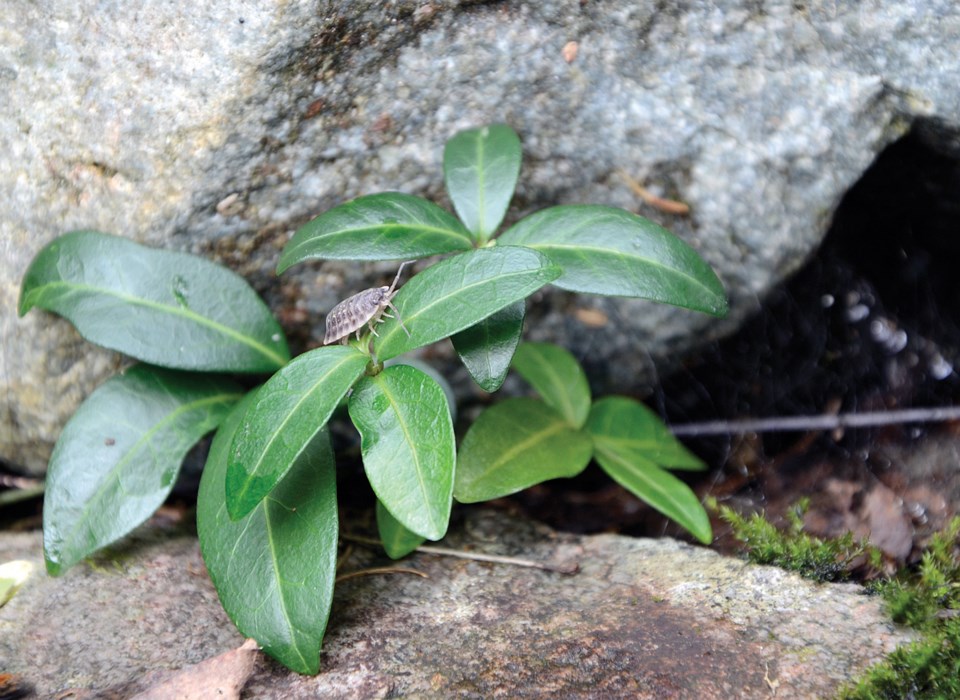Recent rainstorms serve to remind us that when it rains in the rest of Metro Vancouver it pours down by the bucket on the North Shore and few things are more damaging to the soil than heavy rain falling on unprotected soil.
Given the steep terrain on the Shore and the fact that many gardens sit on sloped land, the primary concern is for the loss of soil and property due to erosion caused by the pounding rain.
Erosion is generally defined as the gradual wearing away of rock or soil by physical breakdown due to the action of ice or glaciers, and breakdown by chemical solution, or the transportation or loss of soil caused by water or wind.
On unprotected soil, heavy rainfall damages the soil's surface by destroying structure, causing compaction and leaching nutrients. Those three factors combined lead to decreased aeration and the ability of plants to breathe, declining plant health, an increase in the growth of weeds and a general deterioration of the appearance of the garden. There are also problems downstream that occur as a result of erosion, including the deposit of sediment in waterways that affect the health of marine environments and animals as well as the transportation of fertilizers and pesticides that negatively affect water quality and ecosystem health.
Worldwide soil erosion is a significant problem that affects all of us due to the loss of valuable topsoil from farmland, which leads to a reduction in the world's ability to feed humanity. Closer to home, soil erosion is a significant problem for owners of properties sitting on very steep terrain or those properties adjacent to streams or rivers where real and significant financial impacts can occur when erosion occurs.
Preventing erosion and soil degradation in the garden starts by understanding this one universal truth - soil is rare, valuable and fragile.
All soil should be protected on a year-round basis through the use of protective mulches or the growing of plants. In the garden, the following methods are recommended to protect soil.
Don't leave me naked: Bare soil is easily damaged and lost so always maintain a protective layer of organic mulch on the soil. Recommended mulches include bark mulch, composted bark mulch, wood chips, leaves (shredded or whole), manure and compost. Maintain a year round mulch layer over the entire soil surface to a depth of eight centimetres (three inches).
I'm suffocating, take that cloth off me: Landscape fabric which is widely used for weed suppression is a waste of time and money in my opinion because the weeds end up growing on top of the fabric anyway. And over time the fabric's micro-holes plug up, which denies the soil air and water. However, landscape fabric is useful as a temporary erosion control measure on steep slopes.
Can I please have some clothes? Think of the bare soil as being equivalent to bare human skin. And you wouldn't walk around naked so don't expect your soil to go naked, especially during the pounding rains of winter. Plant trees, shrubs or groundcovers to clothe and protect the soil.
People regularly ask me which plants best prevent erosion, but it is not as simple as a one size fits all prescription.
Plant selection depends on the type of soil, aspect, slope and depth, in other words, the right plant for the right place. And plants have an incredible ability to hold and protect soil.
On steep slopes, a mixture of deciduous trees to grow deep into the earth to hold it combined with coniferous or evergreen trees and shrubs to grow across the upper layers of the soil to hold the surface work very well. In other areas, a robust groundcover like periwinkle might solve or prevent erosion problems.
In general, some plants are better than no plants if erosion is a problem. Often, a combination of plants, land grading and some type of retention structure is needed for maximum erosion control on very steep sites. Retention structures like retaining walls should be properly designed and built to assure that the structure can withstand the inevitable and intense pressure forces that will occur. Land grading practices like terracing can be effective at controlling the force of water flowing across the land.
Well designed, chosen and placed rock boulders can also assist in controlling the movement of rain water across the garden. Rocks large or small are best combined with some type of plating to provide clothing and additional anchorage for the soil and rock.
Even if your garden is not susceptible to erosion, the soil is susceptible to damage from the rainfall, so soil protection should always be top of mind, especially at the onset of the our rainy season.
Todd Major is a journeyman horticulturist, garden designer and builder, teacher, skills trainer and organic advocate. For advice contact him at [email protected]



